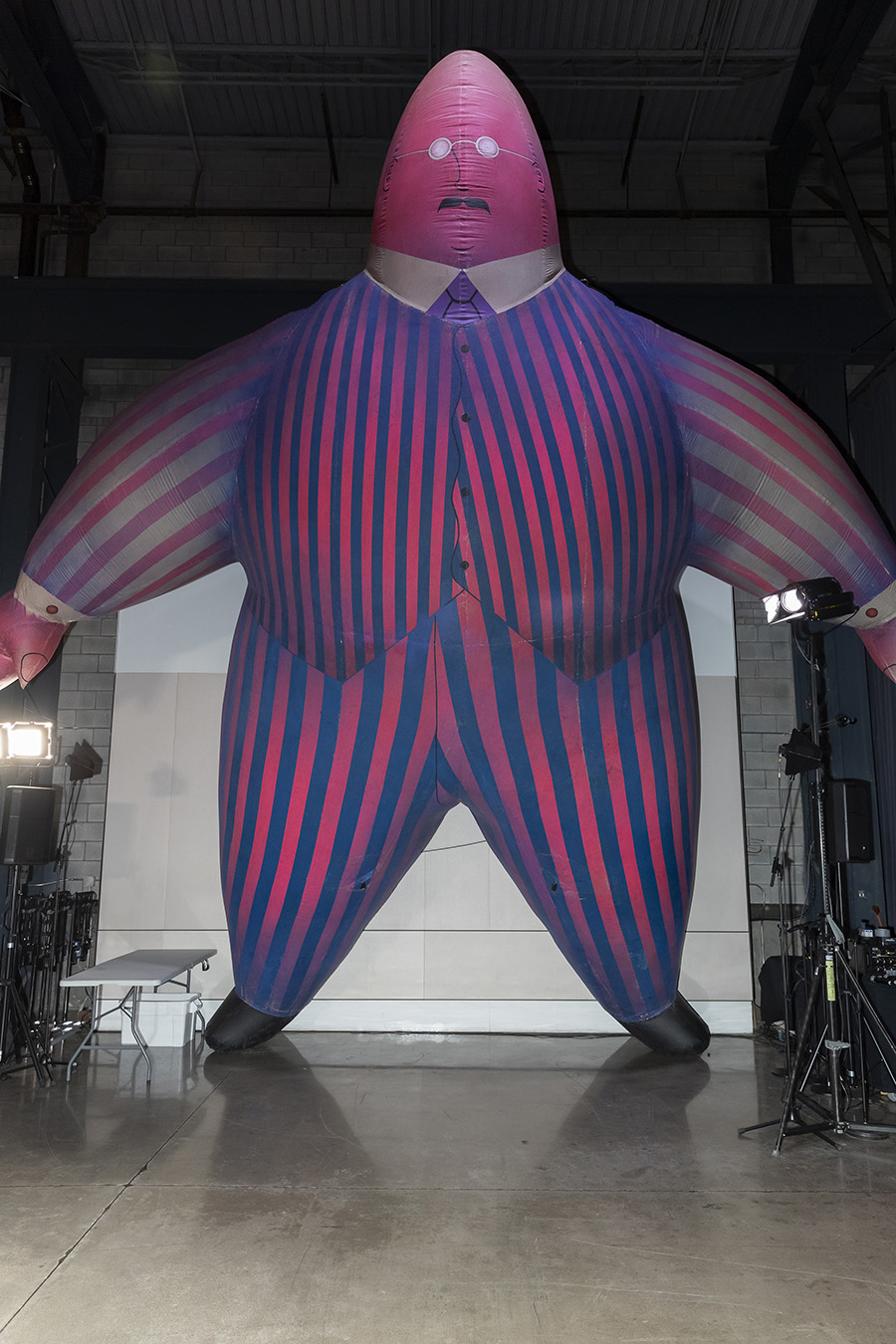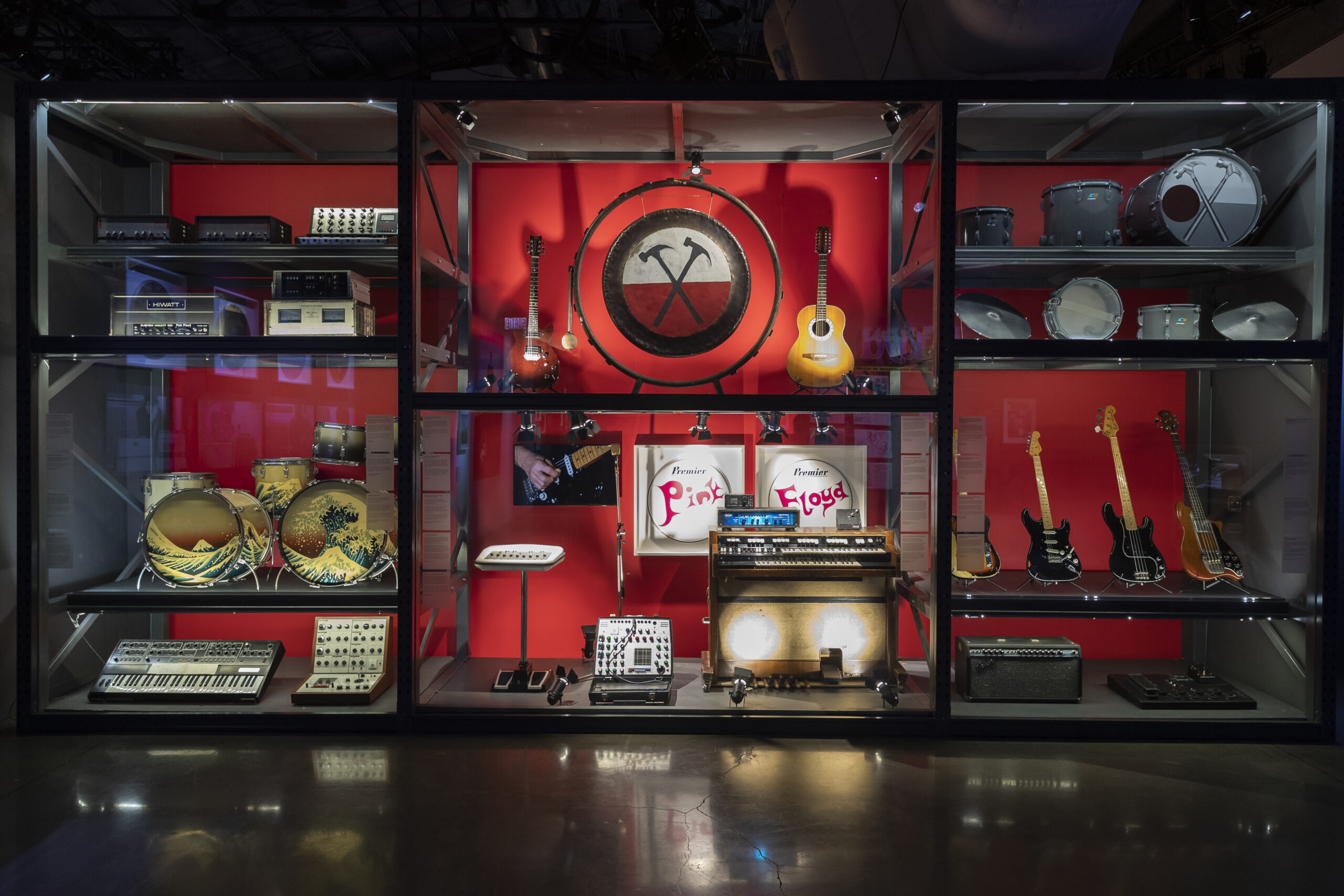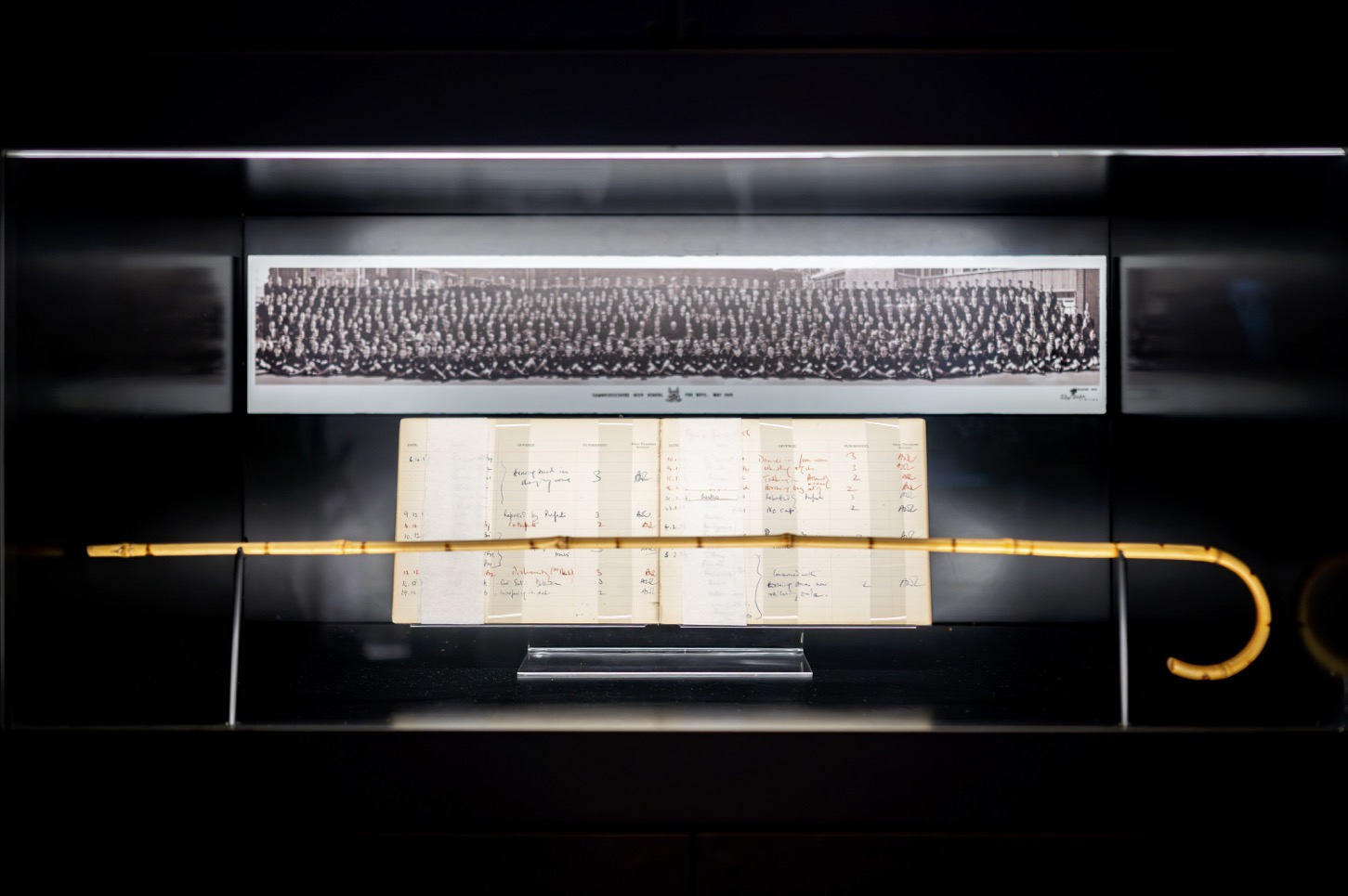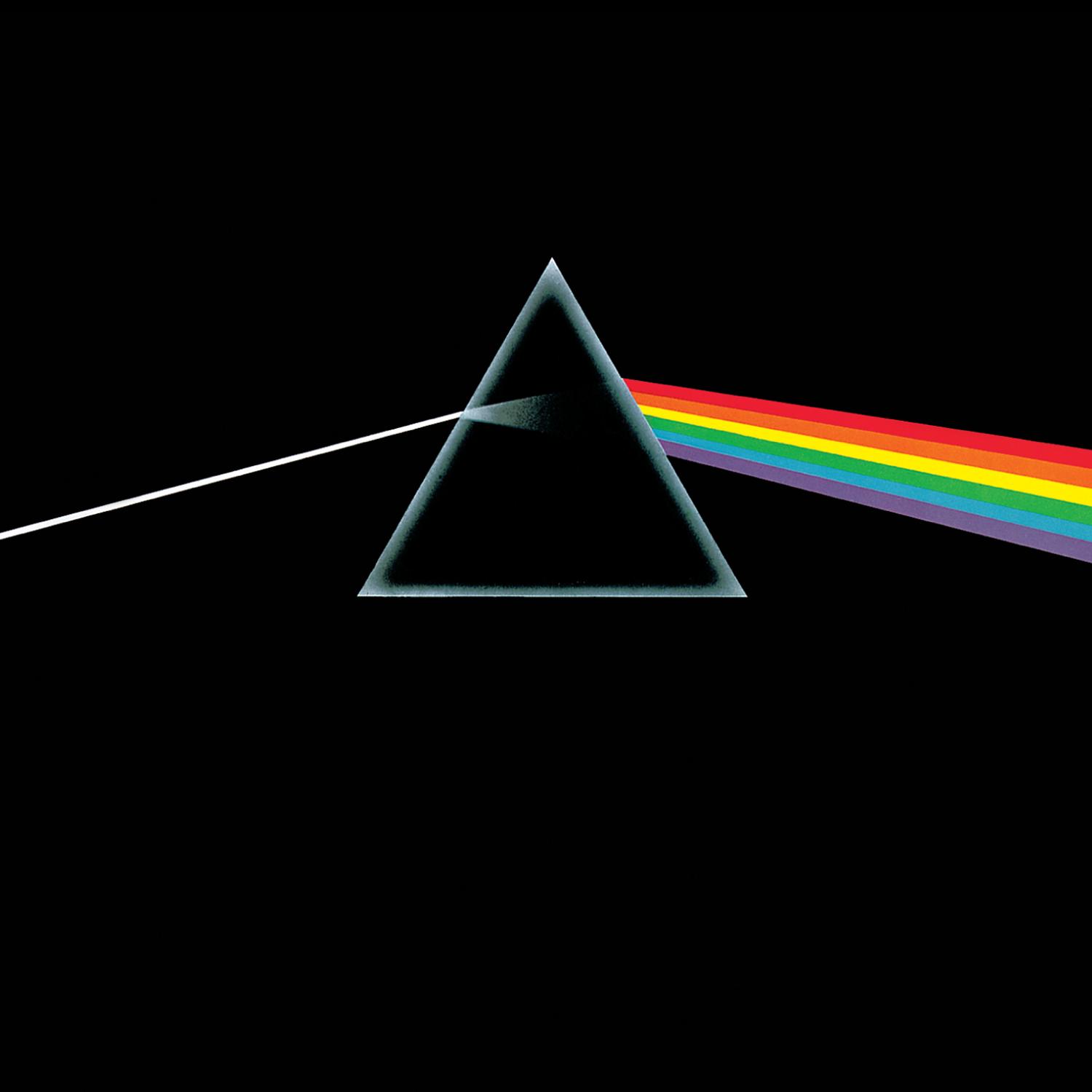‘The Pink Floyd Exhibition: Their Mortal Remains’ Creative Director Aubrey Powell Talks Bringing the Band’s History to Life

Pink Floyd at Kew Gardens, London, 1969. Clockwise, from top: Roger Waters, Richard Wright, Nick Mason and David Gilmour. Photo: © Pink Floyd Music Ltd/ Courtesy of The Pink Floyd Exhibition: Their Mortal Remains
Just seeing the iconic inflatable pig outside The Pink Floyd Exhibition: Their Mortal Remains, which opened Friday at Toronto’s Better Living Centre at Exhibition Place, is cool enough. Then, once you enter, you’re greeted by the 23 foot high and wide inflatable pinstripe-wearing “fat man” inside the foyer — another nod to the legendary British band’s history of using inflatable props.

Pink Floyd, one of the biggest and most important bands in rock history, was formed in 1965 by Roger Waters, Syd Barrett, Nick Mason and Richard Wright. David Gilmour joined in 1968, just months before Barrett left for mental health reasons. The band’s 15 studio albums and other releases have sold in excess of 250 million copies worldwide.
Barrett and Wright are both deceased. Waters’ contentious relationship with Gilmour and Mason is well documented, but they were all involved in the exhibit, providing artifacts and their support. Mason served as the official consultant.
In recent years, Waters has been consistently in the news for alleged antisemitism, including this year (the inflatable black pig in his live show has long had the Jewish Star of David on it along with corporate logos). Gilmour and Mason continue to be aligned and, in 2022, created the first piece of music as Pink Floyd in 25 years, the Ukraine charity single “Hey Hey Rise Up,” with singer Andriy Khlyvnyuk of Ukrainian band Boombox. This late-stage phrase of the band, however, is not represented in The Pink Floyd Exhibition.
Produced S2BN Entertainment in collaboration with designers Stufish, and assembled by creative director Aubrey “Po” Powell — one-half of the iconic English art design team Hipgnosis (which designed album covers for Pink Floyd, Led Zeppelin, and Paul McCartney and Wings, among countless others) — the exhibit features some 350 artifacts from throughout the band’s history. It opened in London in 2017, drawing a half-million people, and has since travelled to Dortmund, Madrid, Rome, Los Angeles and, recently, Montreal (New York is likely next). On display are lyrics, instruments, sketches, posters, even the teacher’s cane used to beat Waters when he was in school. And, of course, there are lots of inflatables, and a gift shop at the end.

Powell, 76, says he was given carte-blanche by the band members to put the exhibit together and talked to Zoomer at Thursday’s media preview about the exhibit, Waters’ controversies and the demise of album art.
KAREN BLISS: Why did you decide to approach the exhibit chronologically versus thematically, organized into touring, albums, lyrics etcetera?
AUBREY POWELL: The first thing I did, when I got the freedom to create this exhibition, was to decide how to do it. I worked out quite quickly that chronologically was the best way to go because there’s been various changes within Pink Floyd, starting with the Sid Barrett version. Then, he left, and it was David joining, and then he and Roger fell out and Roger left, and then we go onto the next stage. So there’s been various stages and you couldn’t mix and match them. At the end of The Final Cut, you’ll see the wall stops there and there’s a gap. That is deliberate. That’s to show which point Roger Waters resigned from the band, and David and Nick carried on with the band. That was an important issue to delineate the two, not because there’s any difference in terms of creative input — because both sides are incredible — but because it was important to show that there had been a split.
KB: Were there periods you were thin on artifacts and had to hunt for more?
AP: Yes, there were areas that we were a bit thin, but then there were other areas that I was swamped with material. Nick Mason was incredible. He’s the hoarder. He’s the guy that has got the most incredible archive, albeit mostly imagery and posters. He’s even got shirts from his early tours in 1968, ‘69, when Pink Floyd was starting out. He contributed a lot. He was very good at remembering where certain things might be. David Gilmour had very little stuff. He had kept virtually nothing. Roger had a warehouse or garage down [by] his house he never even looked at and there we found Gerald Scarfe’s wonderful cells from his animation from The Wall covered in dust. These things just kept coming up. And the more they came up, the more I had to decide, “Oh, we’ll have that in; we’ll take that out.” The “caning book” and the cane, that had to go in because this’s something that happened to Roger when he was 15 and then is reflected years later in The Wall.

KB: Have you added Canadian artifacts?
AP: In Montreal, when you walked into the exhibition, the first thing you saw was a wall of pictures. And it said Pink Floyd Montreal at the top and there were artifacts and newspaper articles and various photographs from the times that Pink Floyd had been in Montreal. And we’ve done the same here with Toronto. The reason why is because people like to take photographs of themselves in front of their memories. “I was at that concert. I remember that.” The thing is when you design an exhibition like this, and it’s a traveling exhibition, it’s divided into segments and chapters, and that’s how it travels. You can’t just say, “Oh, we’ll take that out; we’ll put that in.” It’s expensive enough to travel as it is.
KB: Original Pink Floyd fans will no doubt bring their kids. Most have probably never even seen a handwritten lyric.
AP: A lot of young people come to the Pink Floyd Exhibition. I walk down the street, any street in any city, and within a few moments I’ll see a young kid wearing a Dark Side of the Moon t-shirt or sneakers or something. They’re interested in the image and the name Pink Floyd. Whether they know the album, I don’t know. But this exhibition gives them a chance to be educated. Also, I think, because they live in a digital world and all of this stuff is created in the analog world, it’s quite fascinating for them. Album sleeves died a death in the 1970s, by the 80s, and young people actually want to know what they were and what they were about. The same thing applies to how things [were] recorded. And this is what this [exhibition] is all about. It’s a retrospective, a look back.
KB: How do you feel that today album art is generally not part of the listener experience?
AP: The problem is you look on YouTube or Spotify, the image that goes with the record or the album is the size of a thumbnail and it’s disappointing. The truth of the matter is that Hipgnosis had the best of it. Those 15 years, say from 1967 through to 1982, were the Golden Days of album covers. And what a great canvas to work on for a picture. The gatefold was 24 inches by 12 inches. This was a wonderful space to put your photographs.
KB: Why didn’t you include last year’s Pink Floyd anti-war song in the exhibit?
AP: The only reason I haven’t done that is for political reasons because we don’t know where all that’s headed at the moment … It’s a terrible situation that’s happening there. I haven’t talked to David Gilmour about it, but I certainly will after today, funnily enough, now that it’s brought up.
KB: Some Pink Floyd fans have boycotted the band because of Roger Waters’ perceived antisemitism. I know some who won’t go to this exhibit. [Prominent antisemitism activist Avi Benlolo and CEO of The Abraham Global Peace Initiative, who attended the media preview of the exhibit, has an antisemitism pledge pop-up on the not-for-profit’s website that reads “Hey Roger Leave Us Jews Alone”].
AP: The only thing I can say is you’ve got to remember that Roger Waters left Pink Floyd in 1987 and he’s pursued his own career and gone his own political direction … You look at The Wall, which is very clearly an anti-fascist statement, this was an involvement of all the guys, and whatever’s come out of Roger’s own personal politics since he left the band in ’87, that’s nothing to do with this exhibition.

KB: You co-designed the iconic cover art for the album The Dark Side of the Moon. What did you think about the clueless anti-gay people back in January who got upset when they saw the “rainbow” on the 50th anniversary edition and thought it was Pink Floyd being “woke” [it’s actually a prism by Hignosis artist George Hardie]?
AP: That happened everywhere. I designed this album cover with Storm [Thorgerson], my [late] partner, in 1973. None of this [rainbow] LGBTQ [symbolism] existed. It never struck me, ever. I never associated it with Dark Side of the Moon ever, and when people started to do that, actually, it was kind of great. It gives it a different perspective. I don’t have a problem with that; I don’t think the band do either.
The Pink Floyd Exhibition: Their Mortal Remains runs until July 30.
RELATED:
“Last” Beatles Record to Be Released This Year Thanks to AI, Paul McCartney Says
Rise Up: Pink Floyd Release Their First New Song in 28 Years to Support Ukraine